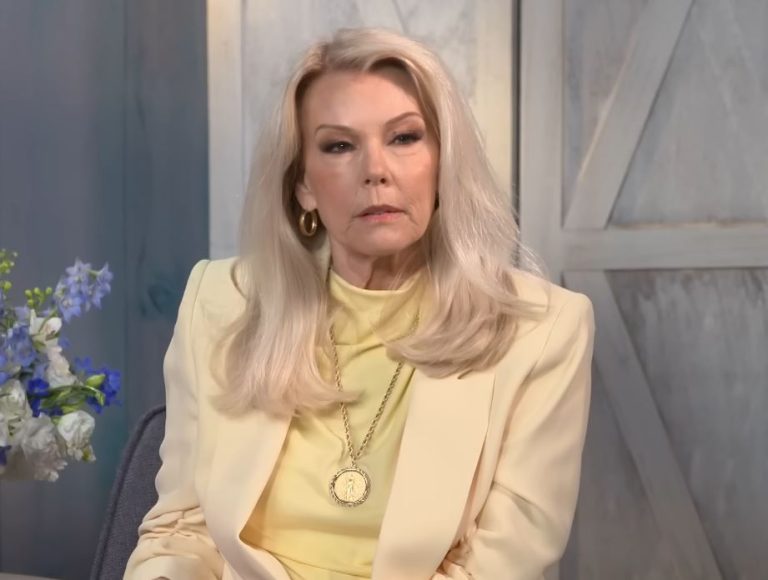Judy Trammell has steadily choreographed the beat of one of the most iconic teams in American sports over the past forty years, moving from dancer to director. Since 1991, she has served as the Dallas Cowboys Cheerleaders’ head choreographer, creating not only routines but also traditions. Her work has transformed halftime entertainment into a signature attraction because it is so successful at creating flair and consistency. Nevertheless, concerns about her real pay have recently grown, especially in the wake of a highly publicized pay increase for the cheerleaders she trains.
Judy’s name has come up in recent months as the Dallas Cowboys Cheerleaders organization has been embroiled in discussions about salary transparency. Curiosity regarding the salary of their longtime choreographer became especially pertinent as cheerleaders fought for and were granted a 400% raise, which raised some of their hourly rates from $15 to $75. Judy makes between $68,555 and $69,810 a year, which is in the middle of the pay range for salaried professionals in creative leadership positions, according to ZipRecruiter. It’s surprisingly humble and subtly symbolic for someone whose choreography defines every spotlight moment, thunderclap, and high-kick.
Judy Trammell Bio and Career Profile
| Category | Detail |
|---|---|
| Full Name | Judy Tharp Trammell |
| Date of Birth | April 29, 1958 |
| Age | 67 (as of 2025) |
| Primary Role | Head Choreographer, Dallas Cowboys Cheerleaders |
| Years with DCC | Since 1980 (Cheerleader 1980–1984, Choreographer 1984–present) |
| Year Promoted to Head Role | 1991 |
| Estimated Annual Salary | Between $68,555 and $69,810 (based on ZipRecruiter national and Nevada data) |
| Net Worth (2025) | Approximately $1.6 million |
| Family | Married to Dick Trammell; three children including daughter Cassie Trammell |
Given the extent of her duties, that pay may seem extremely low by industry standards. In addition to managing rehearsal spaces, Judy creates iconic routines, oversees performance schedules, assists with media production, and helps to uphold a billion-dollar brand. Her choreography can be seen in national commercials, USO tours, NFL games that are televised, and most recently, America’s Sweethearts on Netflix. Her creative control is reinforced in every frame of that show, but the financial trade-offs are never explicitly acknowledged.
It is simple to understand why viewers are speaking out more and more about pay equity throughout the DCC hierarchy. Trammell’s pay subtly reflects the larger trend of underpaid female labor in entertainment, even though it hasn’t generated lawsuits like the cheerleaders’ pay did. Decades of systematic undervaluation of behind-the-scenes creative professionals, especially women, are reflected in this pay scale. Even so, Judy’s commitment is remarkably resilient in the face of fluctuating public opinion.
Judy has changed since joining the DCC in 1980 as a result of her performance and tenacity. Her early cheerleading career coincided with that of Kelli Finglass, who is currently the team’s director. The two developed a relationship that continues to this day to be both personally and professionally supportive. Together, they have created a leadership style that is frequently imitated but infrequently matched, demonstrating the extraordinarily diverse skill sets they both contribute to the team.
Judy’s impact is not limited to choreography. From 2008 to 2013, Cassie Trammell, her daughter, also danced for the Cowboys, leading her group in her last seasons. Cassie is still active with the Junior DCC today, serving as a mentor to the next generation. This generational bond provides an especially poignant look at Judy’s influence, both inside the company and in her own family.
Judy’s public remarks haven’t always been well received, though. She caused a stir on the internet during Season 2 of America’s Sweethearts when she said that cheerleaders who have full-time jobs outside of DCC are more impressive. Many thought the remark disregarded the fight for livable wages, even though she might have meant to emphasize the women’s tenacity and fortitude. Despite her lack of malice, her remarks seemed a little out of place during a season in which dancers were fearlessly demanding greater compensation, security, and recognition.
It was a teaching moment. It demonstrated how even reputable leaders like Trammell can find themselves torn between traditional customs and contemporary demands. Leaders must be open to reflection and, if necessary, recalibration as the industry shifts toward greater transparency and fairness. Despite this, Judy’s team still holds her in high regard. She has had a profound impact and her method is still relevant, especially since she has been on the same path as many of them.
The balance of Judy’s legacy is what makes it noteworthy. She isn’t trying to become famous. Rather, she is subtly influencing moments that millions of people go through, frequently without recognizing the artistic brilliance that goes into them. Her estimated net worth of $1.6 million is the result of decades of consistent work, brand loyalty, and cultural significance. Although it isn’t an empire, it is significant and well-earned.
Trammell has developed a professional identity that extends well beyond cheerleading by fusing discipline, creativity, and mentoring. In essence, she has created a career that combines sports entertainment and performance art, assisting the DCC in maintaining its cultural relevance. Even though her leadership isn’t always flawless, it always produces outcomes. In an environment where expectations are high and attention spans are short, that alone is especially beneficial.


